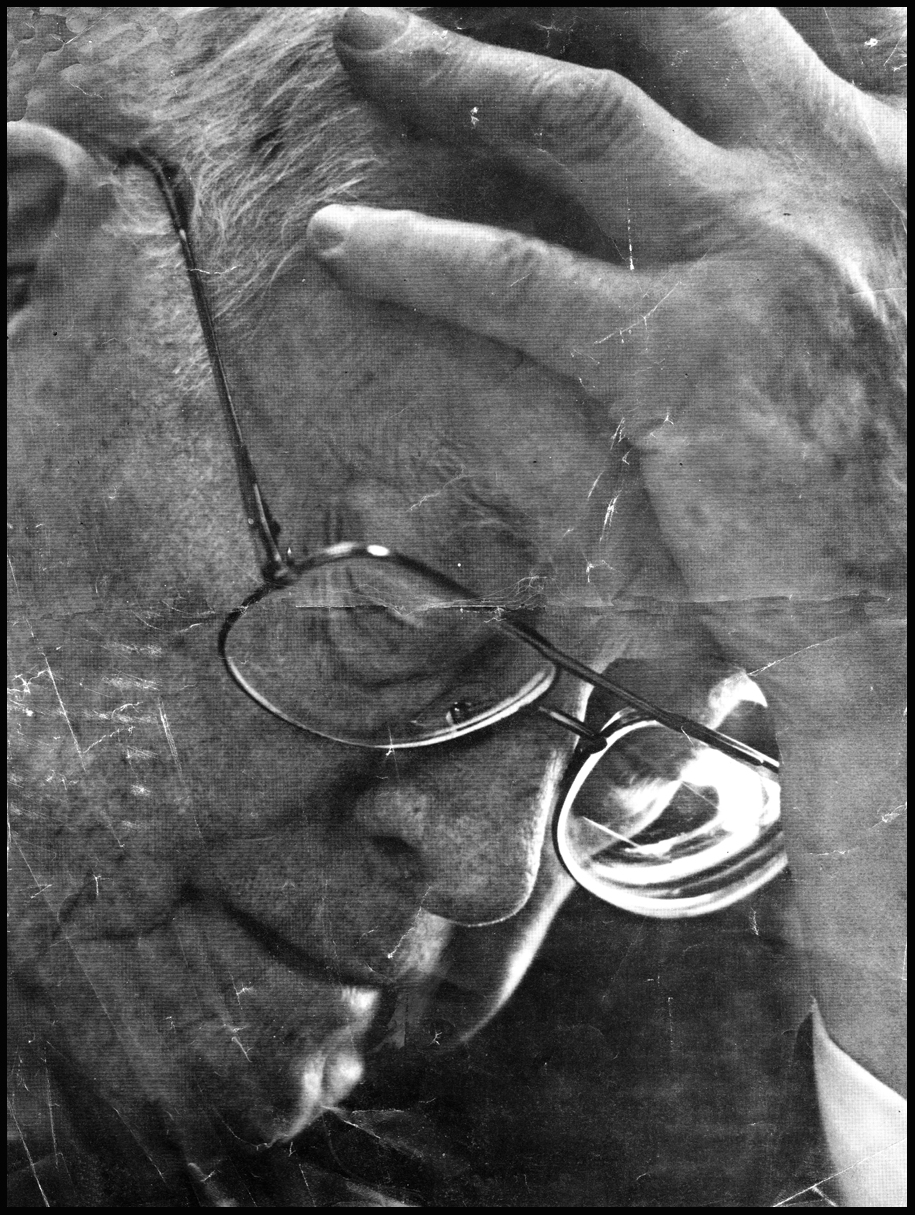
Chapter 21
The Deming Prize
So I found myself in my mid forties and working in a big factory, and I was even becoming part of management. I never would have imagined sitting on a surfboard at Pohoiki, that my mainland adventure would land me in a big gray manufacturing plant and that I would be digging it. I became intrigued with the problem solving presented by these repetitive tasks, like inventing a plywood pitman arm to replace the rope and pulley system they had been using to counterbalance the weight of the silkscreen printing the deck logos. There were always ways to improve on the way things were being done.
This is about the time military powers were blundering their way to the First Gulf War in 1990. I had been a draft evading political science major at UCSB during the Vietnam War and I learned there's always blindness, miscalculations and misrepresentations leading up to these catastrophes. I was watching with great interest since this would likely be the war of JW's generation, and I wanted to know, specifically, how it was all coming down.
Since I was likely to be out on my rounds locking up the plant at 5:30 p.m. when the ABC nightly news came on, I set my VCR to capture the broadcast every day. One night at the end of the broadcast there was a feature about Ed Deming. Who would have thought that a number cruncher would have anything to inspire me?
Deming worked as a statistician for different departments of the US government up until the end of WWII. He had developed his insights about quality control and how the American manufacturers could up their game enormously by paying attention to a few core principles. His ideas fell on deaf ears.
The War had devastated all of the manufacturing capacity of the industrialized world, except for North America. The factories of Europe and Japan had been reduced to rubble. America had vast natural resources, big steel mills and all the factories that had been building the Jeeps, tanks, airplanes, ships and bombs for the war were quickly converted to making consumer goods like cars and refrigerators. In that early post war period, US manufacturers could sell whatever they produced to a world that had no capacity to meet its own needs. Business was booming for domestic manufacturing and plant managers naturally congratulated themselves as geniuses. They didn't need Deming to tell them how to do things better.
I got my driver's license in 1960. By the time I was twenty-five, ten years later, I had owned a 1941 Ford woodie, a 1948 Dodge, a 1948 BSA motorcycle, a 1949 Oldsmobile, a 1954 Chevrolet, a 1954 Hillman, a 1957 Ford, three VW panel vans 1954-58, a 1958 Fiat and a 1962 Jaguar. I identify the year and make of all American cars built from 1950 to 1961 at a glance. I could go to Cuba and perform tune-ups on their vintage cars with a screwdriver and crescent wrench by ear; those cars are like old friends.
I could never afford a car that was less than ten years old. By 50,000 miles, these cars were wearing out and guys like me trying to keep a used car running were constantly replacing peripheral parts and expecting the decline in the innards of the engine to reach the point that it would be major rebuilding or the wrecking yard. First it was a fan belt, then a radiator cap or radiator hose or radiator, then a water pump, then a battery cable, then a generator, then the points needed to be replaced, or the coil or the distributor, or spark plug wires, or the carburetor needed to be rebuilt. If you were a little more into it, you could do a valve adjustment, head gasket replacement, or a complete valve job or camshaft replacement. King pins, wheel bearings, u joints, clutch and pressure plates, throw out bearings, mufflers, and gaskets of all kinds might need replacement. As time went on, the engines began to burn oil more and more as the piston rings and rod bearings wore out. If you weren't up to doing major surgery, it was game over. At 100,000 miles you couldn't expect much more.
The point being that I've seen the component parts wear out with normal use again and again and I have put the wrench to many a bolt and nut on post war vehicles from the US and Europe. I could feel the softness of the steel.
Nowadays I drive Toyota Tundras. I have a 2001 and a 2005. I liked the 2001 so much that I bought a 2005 just like it so I would have another when the first one wore out. That was about three years ago. The 2001 will not wear out. At 285,000 miles, I've only replaced the belts, the battery and just now, the alternator. All the rest of that stuff has never worn out, and whenever I do put a wrench to anything on that truck, the hardness and the durability of the alloy is obvious. That's how much the quality of our vehicles has changed since I was a teenager: more than tripling their functional lifetime. W. Edwards Deming had a lot to do with that.
At the end of WWII, the US Army occupied Japan and took over all its governance. In an effort to stand the country on its own feet again General MacArthur's administration undertook rebuilding its former manufacturing capacity, restructuring it toward consumer goods. Ed Deming was part of the US team to guide a new manufacturing process from the ground up. Japanese industrialists took him very seriously.
In the early 1950's "Made in Japan" was synonymous with cheap junk. Manufactured goods were being made with accidental scrap metal alloys, "pot metal" we called it; whatever they could melt down and cast into something. They were clearly of lower quality than American goods and we scoffed at their pathetic knock offs of our products. By the late 1960's though, the Sony Trinitron had become recognized as the highest quality TV on the market. First Japanese made consumer electronics, and then all kinds of exports to the American market that were beginning to outclass everything made in the USA.
In 1974, we moved to Hawaii for the first time, and there was about half American made and half Japanese made cars and trucks on the island. Out in the rugged Puna district where many roads were just a swath of bulldozer scraped lava flows, we put our trucks through daily torture tests. Over the next 12 years, my pickups were a Chevy, 4 Fords, a Jeep and finally a Datsun. I ran them all into the ground until they were beyond repair. I used to caution my friends to never buy a truck from me as I likely had gotten every last bit of usefulness out of it. It became clear in this environment, that the Japanese trucks, especially the Toyota 4 X 4 pickups, would outlast them all. How did that all happen?
By 1980, Japan's reputation for quality products was unmistakable. In 1981 Ford Motor Company began having some of the automatic transmissions for its economy Ford Escort built in Japan by Mazda. American consumers soon became aware that the Japan-made transmissions were noticeably superior. The ones made in Ohio were erratic, shifted poorly through the gears and were generating drivers' complaints. Ford took notice and dismantled a number of the Mazda transmissions to figure out why. They discovered that while the Japanese tranny used the exact same Ford design as the American, Mazda was holding specifications to tighter tolerances, by a lot. The specs for parts on complicated gizmos like automatic transmissions are written as a measurement "plus or minus"...an allowable deviation from the exact ideal number. The Japanese plant was somehow narrowing that sloppiness to the point where there was virtually no deviation, and the result was magic. At first it was thought that the Japanese had come up with technologically advanced machinery that was making the difference. Closer inspection revealed that the qualitative edge was the mindset of the teams along the assembly line. Deming's mindset.
Statistics always seemed to me like an inhumane discipline of cold mechanical calculations and heartless judgments, so I was surprised to find Deming's philosophy just the opposite. Here are the parts of his system that resonated with me. First was the idea to eliminate the barriers between departments and levels of management to the point where the whole group can operate as a single team, and then go a couple of steps farther to include the suppliers and the customer.
The Deming way is a commitment to constantly improving. Whatever it is you're making can be improved upon. The precision of the Mazda Ford Escort transmission was the result of a manufacturing culture in which the intelligence of every worker is tasked with improving quality. In the West, factories were run from the top down. The executives and the managers figured they had all the answers and workers would do what they were told, and quality control inspectors decided whether the results were good enough, or not. All departments were pushed to achieve numerical levels of production and the source of materials needed for production was the cheapest supplier at the moment. Post war manufacturing quality was just "good enough."
The Ford engineers who took a tour of the Mazda plant were surprised that there were no quality control inspectors and no bins of rejected parts to be sent back for repair, as there would have been at a Ford plant. Workers were encouraged to work at a pace where they could make a perfect part every time. There was no element of the fear of not keeping up with a prescribed pace since that pressure leads to error. Where there was an area that needed improvement, the approach was to provide the workforce with better materials, better tools, better procedures and better training. In fact, that's one of the ways a Deming statistician reads what's going on. If a number of production workers are doing the same repetitive task and there is a wide spread between their output, that is a flag that means very clearly there are gains to be made in the tools, techniques, ergonomics and procedures of that situation. In Deming's world, the data and the statistics of the production line are not used to judge the worker. They are used to make observations about the system.
In the old model, the managers figure out everything and the production workers do what they're told. "You're not paid to think!" Deming's system makes use of each worker's brainpower, and his acute awareness of how to improve that small part of the manufacturing process that's in his hands and in front of his eyes, and the nature of his own physical stresses. Make your processes less painful to the production worker, and errors go down, and your quality goes up, not to mention that that worker doesn't have to suffer to do the job that's been created for him.
I was able to make some small gains when my Facilities duties came in contact with the production line, but a management revolution would be required to make a big difference at Powell. But I was able to apply what I learned from Deming in everything I did and encouraged anybody I was working with to dial in the precision of whatever we were doing. We had built the Taj Mah Wall with that increasing concern for making the component parts identical.
We can all sense the superior quality of cars and trucks from Japan with which US automakers still haven't caught up. It's a matter that country is very proud of. How do the Japanese explain what happened? In Japan, the highest award for excellence in manufacturing is named "The Deming Prize," to honor the profound effect his guidance had in bringing the country's industrial base up from the ashes and rubble of WWII to become a high tech model for the world. The seminal technology of that revolution was Edwards Deming's human software of ideas.





© 2017, 2022 John Oliver
All Rights Reserved
mail@unclejohnsweb.com

This is about the time military powers were blundering their way to the First Gulf War in 1990. I had been a draft evading political science major at UCSB during the Vietnam War and I learned there's always blindness, miscalculations and misrepresentations leading up to these catastrophes. I was watching with great interest since this would likely be the war of JW's generation, and I wanted to know, specifically, how it was all coming down. Since I was likely to be out on my rounds locking up the plant at 5:30 p.m. when the ABC nightly news came on, I set my VCR to capture the broadcast every day. One night at the end of the broadcast there was a feature about Ed Deming. Who would have thought that a number cruncher would have anything to inspire me?
Deming worked as a statistician for different departments of the US government up until the end of WWII. He had developed his insights about quality control and how the American manufacturers could up their game enormously by paying attention to a few core principles. His ideas fell on deaf ears. The War had devastated all of the manufacturing capacity of the industrialized world, except for North America. The factories of Europe and Japan had been reduced to rubble. America had vast natural resources, big steel mills and all the factories that had been building the Jeeps, tanks, airplanes, ships and bombs for the war were quickly converted to making consumer goods like cars and refrigerators. In that early post war period, US manufacturers could sell whatever they produced to a world that had no capacity to meet its own needs. Business was booming for domestic manufacturing and plant managers naturally congratulated themselves as geniuses. They didn't need Deming to tell them how to do things better.
I got my driver's license in 1960. By the time I was twenty-five, ten years later, I had owned a 1941 Ford woodie, a 1948 Dodge, a 1948 BSA motorcycle, a 1949 Oldsmobile, a 1954 Chevrolet, a 1954 Hillman, a 1957 Ford, three VW panel vans 1954-58, a 1958 Fiat and a 1962 Jaguar. I identify the year and make of all American cars built from 1950 to 1961 at a glance. I could go to Cuba and perform tune-ups on their vintage cars with a screwdriver and crescent wrench by ear; those cars are like old friends.
I could never afford a car that was less than ten years old. By 50,000 miles, these cars were wearing out and guys like me trying to keep a used car running were constantly replacing peripheral parts and expecting the decline in the innards of the engine to reach the point that it would be major rebuilding or the wrecking yard. First it was a fan belt, then a radiator cap or radiator hose or radiator, then a water pump, then a battery cable, then a generator, then the points needed to be replaced, or the coil or the distributor, or spark plug wires, or the carburetor needed to be rebuilt. If you were a little more into it, you could do a valve adjustment, head gasket replacement, or a complete valve job or camshaft replacement. King pins, wheel bearings, u joints, clutch and pressure plates, throw out bearings, mufflers, and gaskets of all kinds might need replacement. As time went on, the engines began to burn oil more and more as the piston rings and rod bearings wore out. If you weren't up to doing major surgery, it was game over. At 100,000 miles you couldn't expect much more.
The point being that I've seen the component parts wear out with normal use again and again and I have put the wrench to many a bolt and nut on post war vehicles from the US and Europe. I could feel the softness of the steel.
Nowadays I drive Toyota Tundras. I have a 2001 and a 2005. I liked the 2001 so much that I bought a 2005 just like it so I would have another when the first one wore out. That was about three years ago. The 2001 will not wear out. At 285,000 miles, I've only replaced the belts, the battery and just now, the alternator. All the rest of that stuff has never worn out, and whenever I do put a wrench to anything on that truck, the hardness and the durability of the alloy is obvious. That's how much the quality of our vehicles has changed since I was a teenager: more than tripling their functional lifetime. W. Edwards Deming had a lot to do with that.
At the end of WWII, the US Army occupied Japan and took over all its governance. In an effort to stand the country on its own feet again General MacArthur's administration undertook rebuilding its former manufacturing capacity, restructuring it toward consumer goods. Ed Deming was part of the US team to guide a new manufacturing process from the ground up. Japanese industrialists took him very seriously.
In the early 1950's "Made in Japan" was synonymous with cheap junk. Manufactured goods were being made with accidental scrap metal alloys, "pot metal" we called it; whatever they could melt down and cast into something. They were clearly of lower quality than American goods and we scoffed at their pathetic knock offs of our products. By the late 1960's though, the Sony Trinitron had become recognized as the highest quality TV on the market. First Japanese made consumer electronics, and then all kinds of exports to the American market that were beginning to outclass everything made in the USA.
In 1974, we moved to Hawaii for the first time, and there was about half American made and half Japanese made cars and trucks on the island. Out in the rugged Puna district where many roads were just a swath of bulldozer scraped lava flows, we put our trucks through daily torture tests. Over the next 12 years, my pickups were a Chevy, 4 Fords, a Jeep and finally a Datsun. I ran them all into the ground until they were beyond repair. I used to caution my friends to never buy a truck from me as I likely had gotten every last bit of usefulness out of it. It became clear in this environment, that the Japanese trucks, especially the Toyota 4 X 4 pickups, would outlast them all. How did that all happen?
By 1980, Japan's reputation for quality products was unmistakable. In 1981 Ford Motor Company began having some of the automatic transmissions for its economy Ford Escort built in Japan by Mazda. American consumers soon became aware that the Japan-made transmissions were noticeably superior. The ones made in Ohio were erratic, shifted poorly through the gears and were generating drivers' complaints. Ford took notice and dismantled a number of the Mazda transmissions to figure out why. They discovered that while the Japanese tranny used the exact same Ford design as the American, Mazda was holding specifications to tighter tolerances, by a lot. The specs for parts on complicated gizmos like automatic transmissions are written as a measurement "plus or minus"...an allowable deviation from the exact ideal number. The Japanese plant was somehow narrowing that sloppiness to the point where there was virtually no deviation, and the result was magic. At first it was thought that the Japanese had come up with technologically advanced machinery that was making the difference. Closer inspection revealed that the qualitative edge was the mindset of the teams along the assembly line. Deming's mindset. Statistics always seemed to me like an inhumane discipline of cold mechanical calculations and heartless judgments, so I was surprised to find Deming's philosophy just the opposite. Here are the parts of his system that resonated with me. First was the idea to eliminate the barriers between departments and levels of management to the point where the whole group can operate as a single team, and then go a couple of steps farther to include the suppliers and the customer.
The Deming way is a commitment to constantly improving. Whatever it is you're making can be improved upon. The precision of the Mazda Ford Escort transmission was the result of a manufacturing culture in which the intelligence of every worker is tasked with improving quality. In the West, factories were run from the top down. The executives and the managers figured they had all the answers and workers would do what they were told, and quality control inspectors decided whether the results were good enough, or not. All departments were pushed to achieve numerical levels of production and the source of materials needed for production was the cheapest supplier at the moment. Post war manufacturing quality was just "good enough."
The Ford engineers who took a tour of the Mazda plant were surprised that there were no quality control inspectors and no bins of rejected parts to be sent back for repair, as there would have been at a Ford plant. Workers were encouraged to work at a pace where they could make a perfect part every time. There was no element of the fear of not keeping up with a prescribed pace since that pressure leads to error. Where there was an area that needed improvement, the approach was to provide the workforce with better materials, better tools, better procedures and better training. In fact, that's one of the ways a Deming statistician reads what's going on. If a number of production workers are doing the same repetitive task and there is a wide spread between their output, that is a flag that means very clearly there are gains to be made in the tools, techniques, ergonomics and procedures of that situation. In Deming's world, the data and the statistics of the production line are not used to judge the worker. They are used to make observations about the system.
In the old model, the managers figure out everything and the production workers do what they're told. "You're not paid to think!" Deming's system makes use of each worker's brainpower, and his acute awareness of how to improve that small part of the manufacturing process that's in his hands and in front of his eyes, and the nature of his own physical stresses. Make your processes less painful to the production worker, and errors go down, and your quality goes up, not to mention that that worker doesn't have to suffer to do the job that's been created for him.
I was able to make some small gains when my Facilities duties came in contact with the production line, but a management revolution would be required to make a big difference at Powell. But I was able to apply what I learned from Deming in everything I did and encouraged anybody I was working with to dial in the precision of whatever we were doing. We had built the Taj Mah Wall with that increasing concern for making the component parts identical. We can all sense the superior quality of cars and trucks from Japan with which US automakers still haven't caught up. It's a matter that country is very proud of. How do the Japanese explain what happened? In Japan, the highest award for excellence in manufacturing is named "The Deming Prize," to honor the profound effect his guidance had in bringing the country's industrial base up from the ashes and rubble of WWII to become a high tech model for the world. The seminal technology of that revolution was Edwards Deming's human software of ideas.

All Rights Reserved
mail@unclejohnsweb.com
